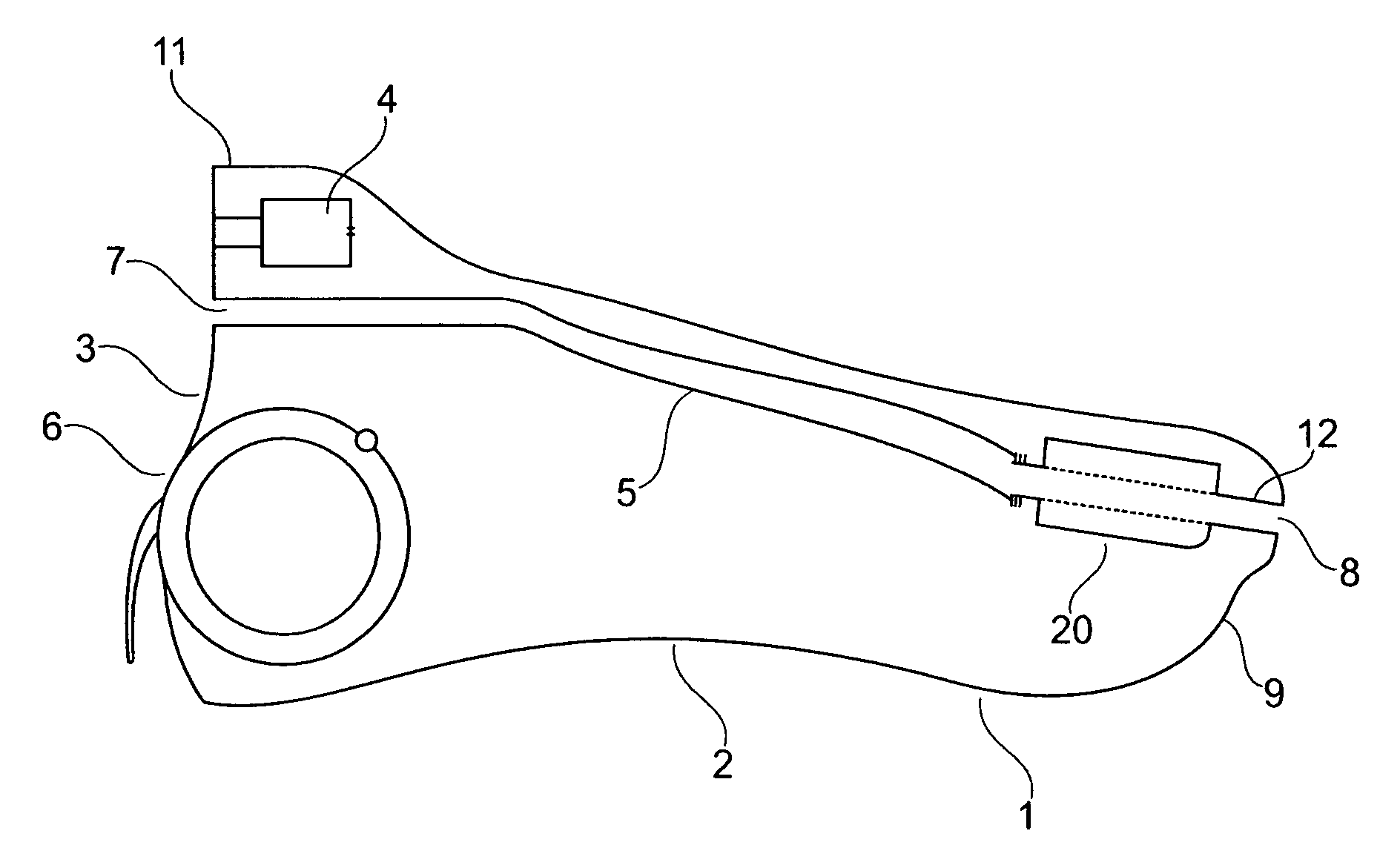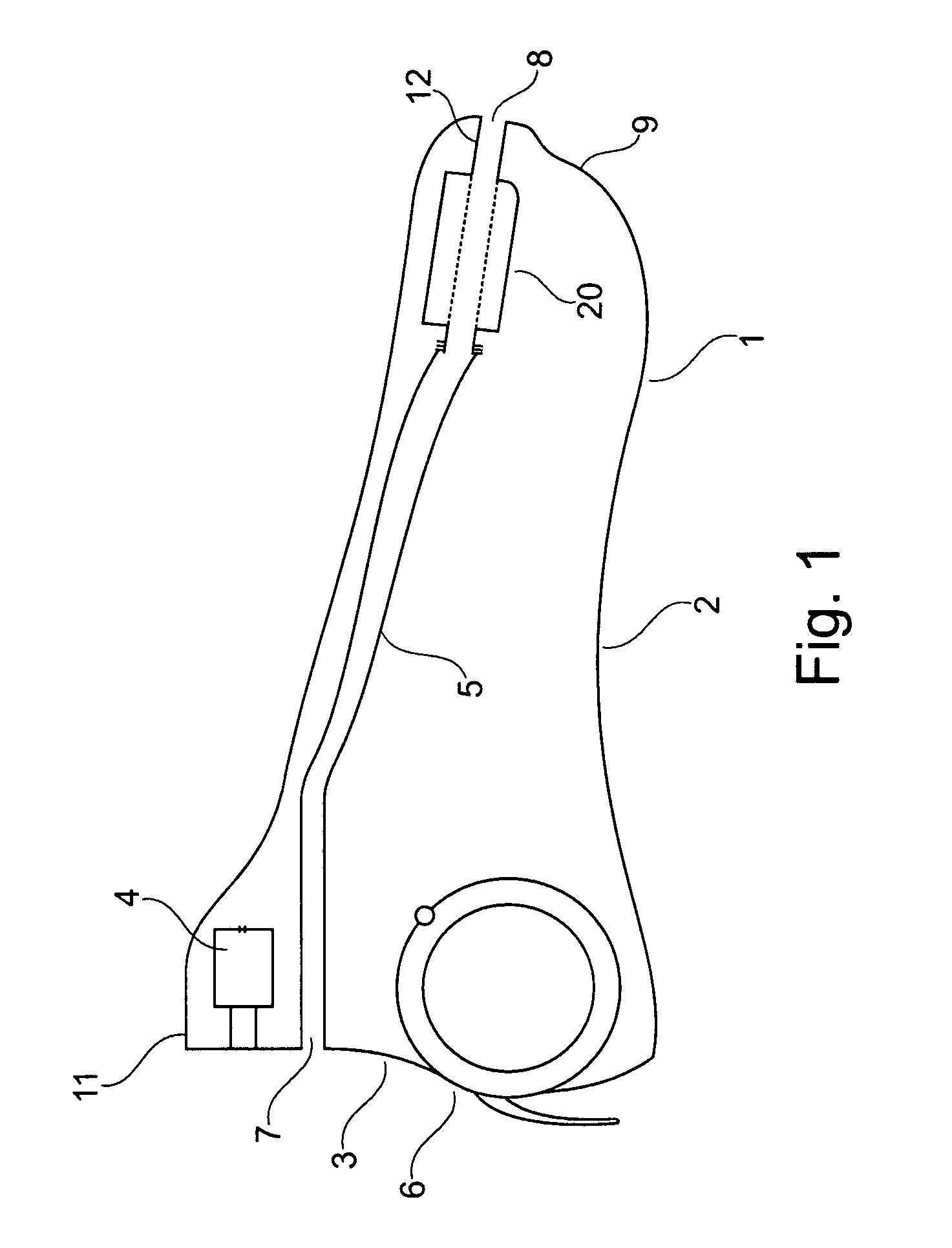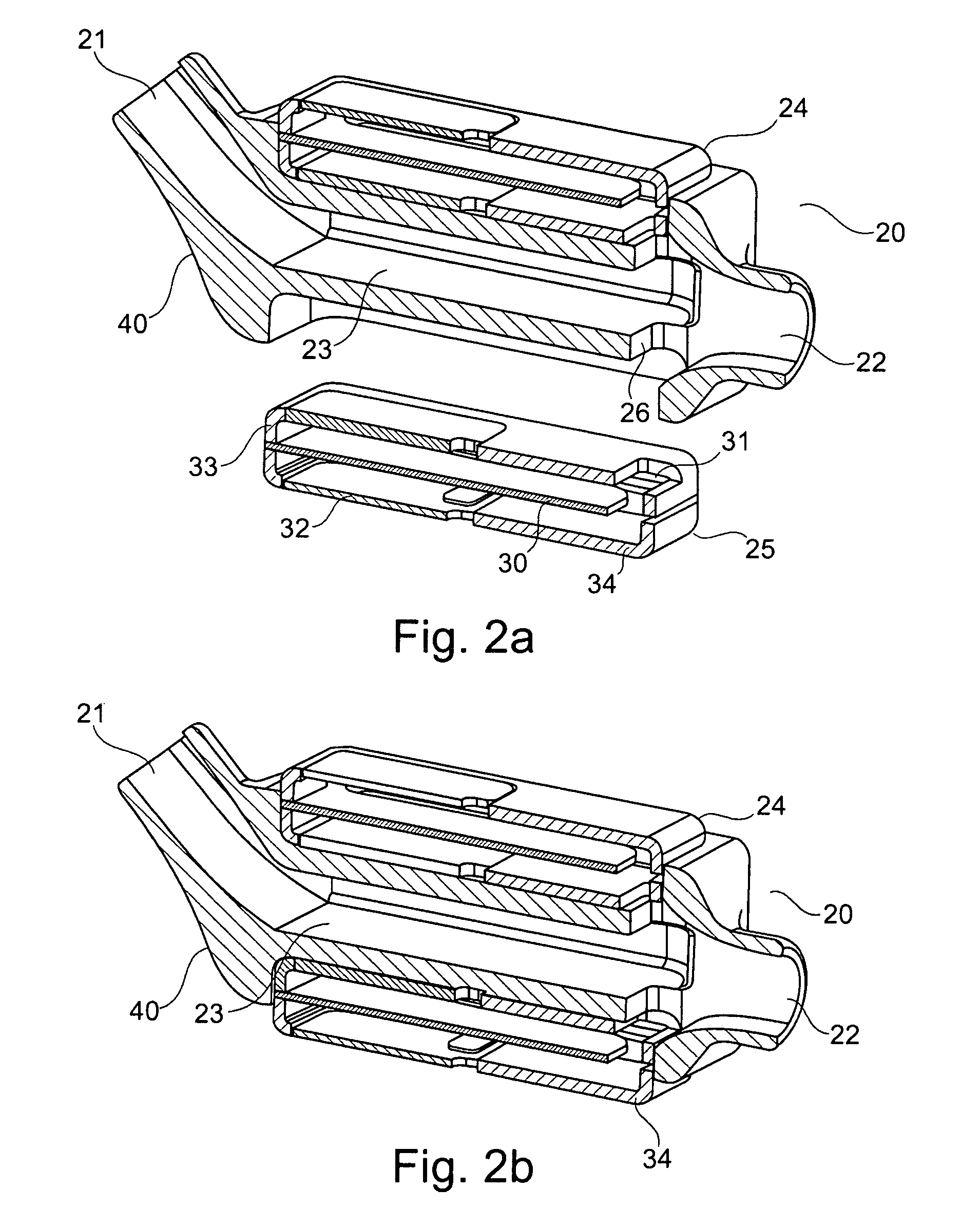Hearing instrument with improved venting and miniature loudspeaker therefore
a technology of acoustical venting and hearing aids, which is applied in the direction of hearing aid mounting/interconnection, hearing aid venting, electric devices, etc., can solve the problems of occupying the shell or earmold surface of the hearing aid, and the tip portion of the earmold is particularly problematic, so as to facilitate coupling, relax the positioning of individual elements, and reduce the space requirements
- Summary
- Abstract
- Description
- Claims
- Application Information
AI Technical Summary
Benefits of technology
Problems solved by technology
Method used
Image
Examples
Embodiment Construction
[0044]FIG. 1 is a schematic illustration of an ITC hearing aid earmold 1. The earmold 1 encloses various electronic, mechanical and electroacoustic components and functions to shield these from an external environment.
[0045]The earmold 1 comprises an at least partly hollow shell 2 having an outer contour shaped to fit a hearing aid user's ear canal. In the present embodiment of the invention, the earmold 1 includes a customized shell 2 that has been from an ear canal impression of the hearing aid user's ear canal. The ear canal impression may be provided in either virtual form, such as a digital computer representation, or in tangible form such as a physical impression. In other embodiments of invention, the shell 2 is supplied with a prefabricated outer contour, preferably including elastomeric or deformable shell portions that can fit into a plurality of ear canal shapes and sizes.
[0046]The earmold 1 comprises a miniature dual-diaphragm speaker 20 with a through-going canal or ven...
PUM
 Login to View More
Login to View More Abstract
Description
Claims
Application Information
 Login to View More
Login to View More - R&D
- Intellectual Property
- Life Sciences
- Materials
- Tech Scout
- Unparalleled Data Quality
- Higher Quality Content
- 60% Fewer Hallucinations
Browse by: Latest US Patents, China's latest patents, Technical Efficacy Thesaurus, Application Domain, Technology Topic, Popular Technical Reports.
© 2025 PatSnap. All rights reserved.Legal|Privacy policy|Modern Slavery Act Transparency Statement|Sitemap|About US| Contact US: help@patsnap.com



